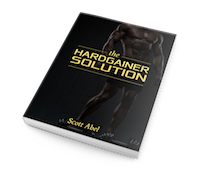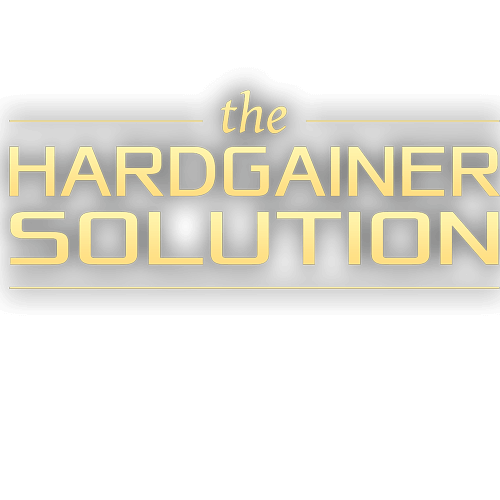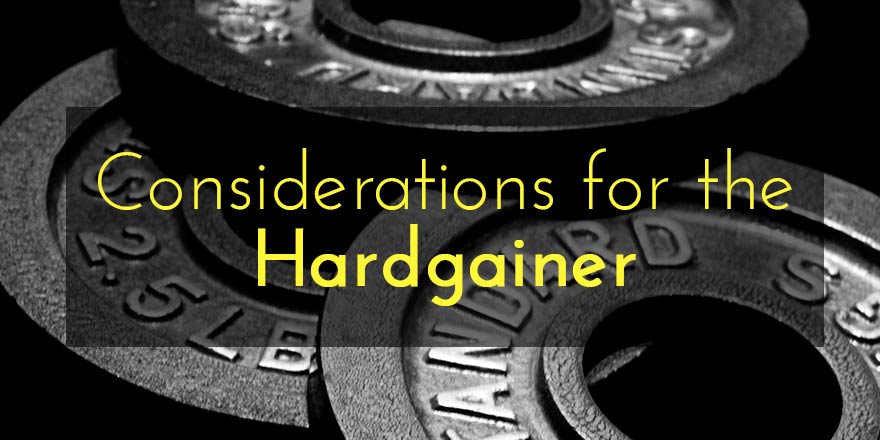Identifying the “Hard Gainer” is pretty simple.
Actually, it is something most trainees can tell about themselves just by thinking about it for a second.
If you are working hard and doing the same programs that are common to the physique-enhancement industry, but you seldom make any real-world progress compared to other people you know, then congratulations: you are likely a hard gainer.
And here's a question:
What if training like everyone else, or training like the top physique guys – breaking training into a “bodypart day” and so on – what if that is part of the problem?
There is a lot that goes into being able to develop a physique, and this is even more true for hardgainers, and what they have to consider.
Experts have only looked at the elements of what drives and stimulates adaptations for physique development, but not enough experts have ever been focused on what LIMITS these elements of physique-enhancement. If we start to look at the hardgainer as a separate demographic of trainees then a lot of things come to light.
And there is actually a lot of good, reasonable research on these exact limitations if you know where to look for it.
The ability to recruit motor units with great efficiency — as in being able to recruit high numbers of motor units when the task demands it — is largely controlled by individual genetics. And this ability of muscle fiber recruitment depends on many things: the density of motor neuron populations within the muscles range of function, the quality of the never tissue, the quality of the nervous system as it partners with muscle fibers, the proportion of fast twitch to slow twitch muscle composition of an individual, and even some factors not yet discovered.
Some of these factors above can adapt to stress imposed by training stimuli and some cannot.
But just these few things mentioned above explain that the notion that “hard-gainers” are the same demographic as everyone else – and that they should train like everyone else – well this is just simply faulty logic. You cannot negate these above factors that may limit the hardgainers adaptation to normal training stimuli that everyone else takes for granted.
In truth, a hardgainer trainee is a lot like being a perpetual beginner trainee.
It is well-documented that a beginner trainee cannot recruit all available motor units – maybe less than 70% of them because this is all the recruitment their individual genetics and training has adapted to, as beginners. But neural recruitment is indeed a trainable quality – but it just may be that some trainees are “resistant” to this trainable ability of recruitment enhancement.
Understanding the nature of enhancing motor-unit recruitment should take experts away from the idea of pure “strength training” as a solution for the hard-gainer: but it doesn’t. The paradigm blindness in this industry is strong.
Telling all trainees that physique enhancement is achieved by “just getting stronger” is not only wrong, it doesn’t address the hard-gainer demographic specifically.
Most experts in this industry are still stuck on one single lens of musculoskeletal considerations when it comes to adaptive response to training stimuli, but what we see in the hardgainer demographic is that their issues are more often than not neuromuscular in nature.
If you truly understand this difference for the hardgainer, then it makes sense that a higher volume of sets AND reps makes better sense to induce neural recruitment adaptations, especially as compare to pure strength training. In other words, for the hard-gainer demographic you will make better progress by and large in terms of physique development when you focus more on progressing reps, instead of adding load.
Of course the above just outlines some of the stimulus-related considerations that can limit a hard-gainer adapting to training the same way as everyone else. But the fact is fiber recruitment AND RECOVERY are both factors that are obstacles for the hard-gainer.
And in terms of recovery what I am writing about here is both inter-workout recovery (recovering between workouts) and intra-workout recovery (recovering within the workouts). And I’ve expanded on the importance of both these types of recovery for the hard-gainer in my Hard Gainer Solution project.
For the hard-gainer too much of a good thing is still just… too much. Nothing exceeds like excess! Overwhelming the body with training stimuli, even the “right” kind of training stimuli, is too much when the body can’t optimally recover from it.
For the hard-gainer who has trouble with adequate recovery within workouts and between workouts, then training multiple exercises for one body part in a session can be too much. As multiple Mr. Olympia Lee Haney was so famous for saying:
“Stimulate, don’t annihilate.”
And nowhere does this phrase apply better than to the hard-gainer demographic. A drug-free hard-gainer, trying to follow the training script of some top physique champion simple makes no sense. You are not of the same genetic make-up, and you need to understand that. By training yourself “AS” a hardgainer, you can finally make the advances in physique-enhancement you’ve been looking for.
Other Hardgainer Workout Considerations
But a majority of the hard-gainers demographic are your own worst enemies as well. You carry around in your heads far too many industry hyped-up marketing promises – that bear little resemblance to reality. So many neophyte trainees and their hard-gainer cousins have this fantasy goal of increasing muscle mass but getting “ripped and cut” at the same time.
But the reality is that for 90+ per cent of the hard-gainer trainee demographic – you can’t go on a calories deprivation diet and expect to gain mass at the same time, even in the face of useless industry terminology like gaining “lean mass.” For most trainees in the hard-gainer demographic, you lack development and you seek it as a goal. So how does living in a caloric deficit make any sense?
This is another problem that stands in the way of the hard-gainer accumulating real-world muscle development. Forget about “getting ripped” as you build muscle. That “may” happen for the most genetically elite trainee, or those consuming a lot of pharmaceuticals. But if you are a hard-gainer this is never going to be you. You need to adapt the Abel mantra that “you can’t sculpt a pebble.”
The good thing is that in my Hard Gainer Solution project, I’ve outlined an exact approach to diet-strategy that isn’t so trite as “bulking up” and “see-food dieting.” That isn’t an answer either.
The point of all this is to understand and accept that the hard-gainer is simply a different demographic than other trainee populations. Therefore, training and diet-strategy implementations need to cater to this difference.
It reminds me of how people were treated before the diagnosis of “dyslexia” came to light. Students tried hard but were relegated to labels as “not as smart” or “below-average students.” But when the diagnosis came to light we learned that very, very intelligent people were dyslexic. And developing programs that catered specifically to their demographic allowed them to learn and soar.
The same thing exists here in the training game. We need to delineate the hard-gainer demographic and understand their training needs. We need to look at things that “limit” their adaptive response to training – and cater to this demographic as a whole – in both training protocol and diet-strategy. And that is what I have attempted to do in my Hard Gainer’s Solution project.
But there’s more to consider here as well. There are hormonal elements involved as well. Some hard-gainers fit the description from the beginning because of their genetics. Some trainees (myself included) become a fit to the ‘hard-gainer’ demographic through age, injury, hormonal changes etc. I’ll just outline a few of these scenarios here.
It’s a well-researched fact: biomarkers related to exercise and performance clearly show that when you exercise too much – including training too hard and for too long per session – it is “natural” to see a dip in testosterone.
And of course less testosterone is never a good sign when trying to develop a physique or maintain a developed physique. I started noticing years ago a strange trend: guys were coming to me in their 30s and when I sent them for blood tests their testosterone levels were far, far below normal. These were almost always guys who were overtrained, or, on the flip side, very overweight.
Furthermore, for those who train too hard and for too long per session it is also “natural” to see an increase in creatine kinase. This indicates muscular damage (the opposite of positive adaptive response). The point here is that as I already outlined “recovery” is a problem for the hard-gainer already, so following training protocol of bodybuilders and others with well-developed physiques may lead to the low testosterone and increased creatine kinase outlined above.
As I just said there are those who are from the beginning hard-gainers because of individual genetics. Then there are those who “become” hard-gainers through other outside processes. One of these is aging. Hormonal changes take place as we age. All individuals lose muscle mass as we age. All individuals will experience a decline in work capacity as we age. Ironically those with a high-performance athletic background will experience these changes more dramatically. I myself am now a hard-gainer! This is due to internal changes from aging, arthritis, and other limitations.
Practically ALL older trainees will benefit from a reduction in training stimulus as recuperative capacity is challenged… but you have to do it right, so that you get recover and adaptive response.
We are just beginning to truly understand the ins and outs of the Hard-Gainer trainee demographic and how to treat them separately because of it.
My Hardgainer Solution project is a step in that direction.
More to come!
The Hardgainer Solution is available now.



